
by Betty R. Torrell, 2016 VAF Access Awardee
We hope once more to feel like a small group of intrepid fieldworkers, in it together to better understand what we love. (Conference Program-Welcome to Durham)
There are several definitions for the colloquial expression “bring it home”. They are primarily concerned with emphasizing the delivery of a message or an outcome. Each of these defines an aspect of my experiences at the Durham conference:
- A positive encouraging and motivating phrase to get to the punch line.
- Encouraging to state the point.
- Please get to the climax.
- To return something to its rightful location (http://www.urbandictionary.com)
1. “A Positive Encouraging and Motivating Phrase to get to the Punch Line”
I applied for the Access Award as a Visiting Professor of Interior Design at Western Carolina University (WCU). Having moved to North Carolina from the Pacific Northwest, an awareness of the vernacular architecture and material culture of North Carolina became central to my personal education and my new role as an educator.
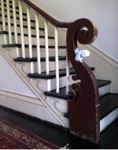 One of my classes is the History of Design, a survey of art, architecture and furniture from ancient times through the present day. Inspired by the rich local culture of the region, I added to the curriculum a unit focusing on North Carolina where the students’ individual research projects concentrated on the local vernacular both in terms of the built environment and material culture. This year’s theme for their research papers echoed the WCU campus theme of Africa, specifically exploring
One of my classes is the History of Design, a survey of art, architecture and furniture from ancient times through the present day. Inspired by the rich local culture of the region, I added to the curriculum a unit focusing on North Carolina where the students’ individual research projects concentrated on the local vernacular both in terms of the built environment and material culture. This year’s theme for their research papers echoed the WCU campus theme of Africa, specifically exploring  the contribution of the African-American to the material culture of Appalachia. Coincidentally, the subject of one of the student research projects was the work of cabinet maker Thomas Day, whose work and workshop were included in the VAF conference Field Notes, “Bright Leaf Culture and Thomas Day”. More than a coincidence, this “punch line” to my conference experience reinforced my belief in the importance of the local vernacular to the appreciation of the history of design.
the contribution of the African-American to the material culture of Appalachia. Coincidentally, the subject of one of the student research projects was the work of cabinet maker Thomas Day, whose work and workshop were included in the VAF conference Field Notes, “Bright Leaf Culture and Thomas Day”. More than a coincidence, this “punch line” to my conference experience reinforced my belief in the importance of the local vernacular to the appreciation of the history of design.
2. “Encouraging to State the Point”
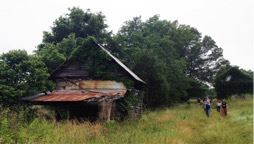 The second definition, “encouraging to state the point” was “brought home” in the conference Paper Sessions, particularly as a new VAF member and conference
The second definition, “encouraging to state the point” was “brought home” in the conference Paper Sessions, particularly as a new VAF member and conference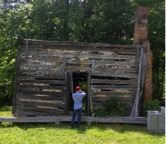 attendee in the session titled “User’s Guide to the VAF”. The new members who attended this sessions were invited to “get the most out of what VAF has to offer” by receiving information about participating in VAF conference paper presentations and publishing in the Journal of the VAF Forum or VAN, thus encouraging us to “state the point” by sharing our work with the VAF community.
attendee in the session titled “User’s Guide to the VAF”. The new members who attended this sessions were invited to “get the most out of what VAF has to offer” by receiving information about participating in VAF conference paper presentations and publishing in the Journal of the VAF Forum or VAN, thus encouraging us to “state the point” by sharing our work with the VAF community.
3. “Please get to the climax”
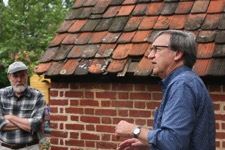 As a new attendee to the conference the climax for me was the fieldtrips: both the All-Day Bus Tours and the Post-Conference Tours on Sunday. When registering for the tours, I found it difficult to select from the choices. All the
As a new attendee to the conference the climax for me was the fieldtrips: both the All-Day Bus Tours and the Post-Conference Tours on Sunday. When registering for the tours, I found it difficult to select from the choices. All the 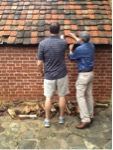 fieldtrips seemed like a once-in-a-lifetime opportunity. The preparation material in the booklets was exhaustive and thought-provoking. The significance of the often little known but extraordinary sites and the level of access to these sites was beyond expectation. The camaraderie and fellowship of the tour participants and leaders was inspiring, and the pride exhibited by the building and site caretakers was heartwarming. Of the four conference days the tours were truly the highpoint for me.
fieldtrips seemed like a once-in-a-lifetime opportunity. The preparation material in the booklets was exhaustive and thought-provoking. The significance of the often little known but extraordinary sites and the level of access to these sites was beyond expectation. The camaraderie and fellowship of the tour participants and leaders was inspiring, and the pride exhibited by the building and site caretakers was heartwarming. Of the four conference days the tours were truly the highpoint for me.
3. “To return to its rightful location”
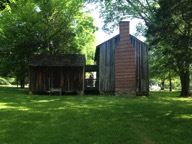 The opportunity to participate in this year’s conference “brought home” to me not only the richness and diversity of North Carolina as expressed through its vernacular architecture, but reinforced the importance of the discourse on the vernacular and how this discourse occupies a “rightful location” in our scholarship and work. As Yuko Nakamura wrote in the Vernacular Architecture Newsletter (VAN) reflecting on the conference Field Notes sessions:
The opportunity to participate in this year’s conference “brought home” to me not only the richness and diversity of North Carolina as expressed through its vernacular architecture, but reinforced the importance of the discourse on the vernacular and how this discourse occupies a “rightful location” in our scholarship and work. As Yuko Nakamura wrote in the Vernacular Architecture Newsletter (VAN) reflecting on the conference Field Notes sessions:
This issue of definition, apparently so simple, has proven to be one of the most serious problems for advocates of vernacular architecture and landscapes research. ‘A straightforward, convincing, authoritative definition has not yet been offered,’ write architectural historians Dell Upton and John Michael Vlach, in the introduction of their 1986 edited volume ‘Common Places: Readings in American Vernacular Architecture.’ Thirty years have passed since this statement. I now look for VAF members’ help to better understand what we study.
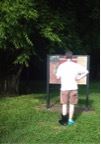 As Nakamura’s question coming out of the conference seeks to define vernacular architecture, our answer will shape the outcome of our efforts and its impact on our communities.
As Nakamura’s question coming out of the conference seeks to define vernacular architecture, our answer will shape the outcome of our efforts and its impact on our communities.